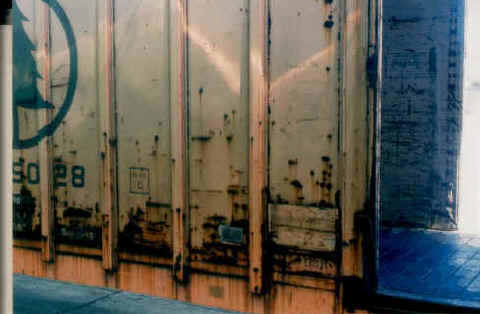
 |
The salts initiate a hygroscopic action that draws moisture right through the coating and usually creates an active corrosion cell behind the coating. This activity causes corrosion of the very substrate the coating is in tended to protect, and usually the coating blisters. Salts deposited on a surface between coats definitely can affect
They can also be the cause of degradation of the substrate. Left unchecked, the surface contamination can corrode into deep pockets, making decontamination even more important and challenging. Lost productivity from protective coating failures are costly and can be hazardous.
The general condition of the car, other than the exterior, is good. This car is scheduled to be recoated for corrosion control. At the time of the existing coating, there were no procedures commonly used to address salt contamination prior to application of coating. The corrosion damage viewed is partially due to impact damage allowing salts to intrude to the surface, partly caused by salts being coated over.

Small nicks are visible from impact damage, but note most damage is in blistered areas. Also note the undercutting action of the corrosion, both at the location of the broken blisters and at the vertical upright lap joints. At these lap joints the salts have penetrated between the two pieces of steel, bringing moisture into the crevice through the salts hygroscopic action and the ongoing corrosion is very active. With the cyclical nature of salts, all that is needed for this corrosion to continue is a minuscule amount of moisture.